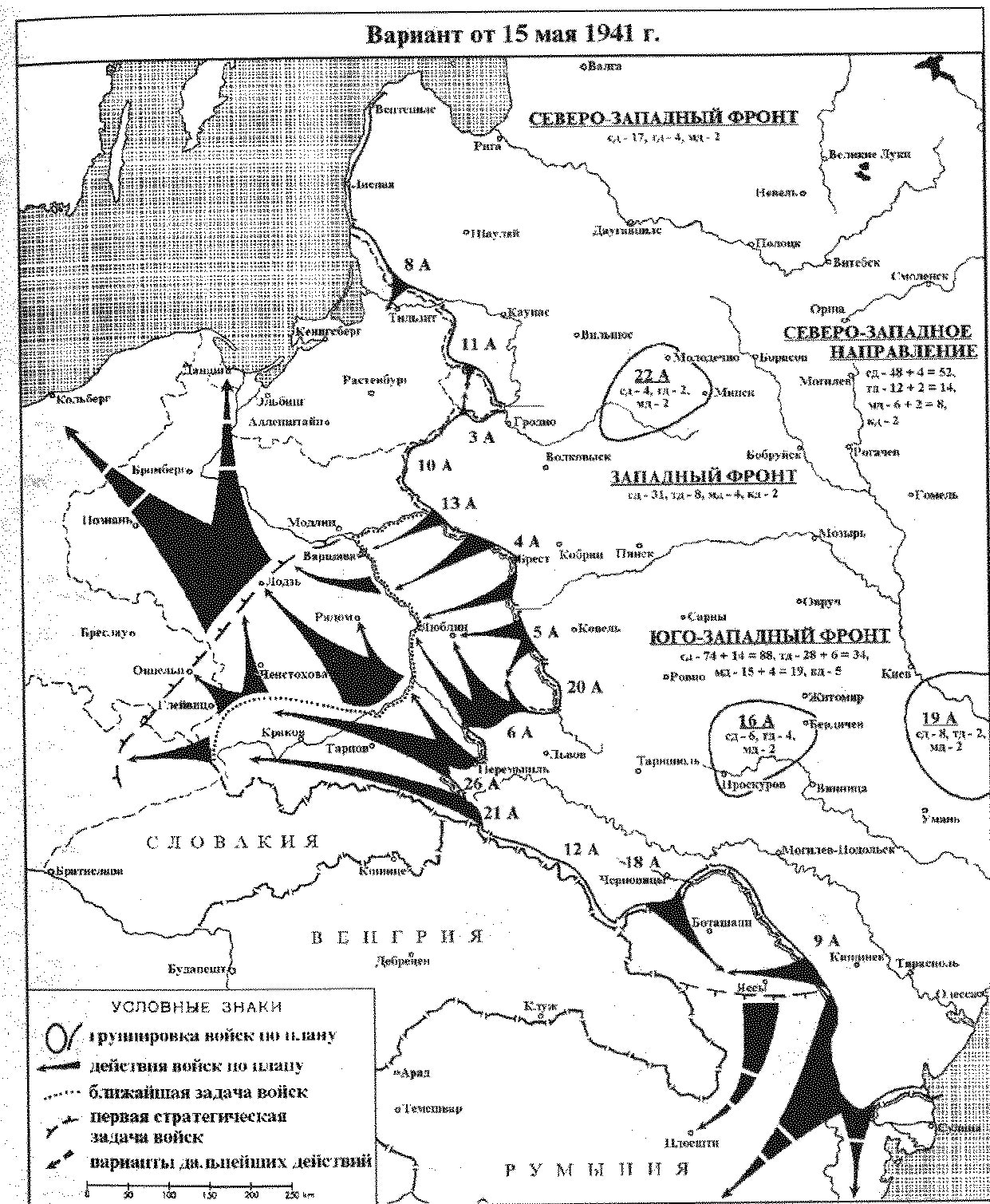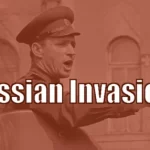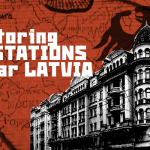At the end of the World War II Allied powers along with the Soviet Union crushed Nazi Germany. Undoubtedly Soviet Union made the most effort in defeating the Nazi Germany and Great Britain and US should be thankful for it. If Nazi Germany never attacked the Soviet Union at June 22, history would be different and more gruesome for Great Britain and the US. Because of these historians of the west have ignored the real reasons why Germany attacked the Soviet Union and what was the role of the Soviet Union in the starting of the war. This article will discuss the different history of World War II and the Soviet Union.
During the Cold war despite the Soviet Union is the main enemy of the west its role in the war and its crimes were never fully discussed in detail. First attempts to uncover the white spots of history were done by German historian Joachim Hoffman (1930.-2002) who published the book titled The Stalin’s war of Destruction in 1995. He made a thesis that Stalin planned a full-blown attack on Germany in 1941, but was outscored by Hitler who managed to attack first. However, he insists that Hitler had no knowledge of Stalin’s plans and his attack cannot be seen as a defensive action. The book made a rage in the ranks of German historians and politicians. He was even accused of being a Nazi. Thus his book was generally denounced in German historiography. That shows a pattern of ash scattering on themselves when German historians took all blame on Germany. In the same time as Hoffman, a Soviet ex-spy Viktor Suvorov (Rezun) also worked on this thesis. He deserted the Soviet intelligence service and fled to Great Britain because he was disillusioned about the Soviet regime. Because of that Soviet Union gave him three death sentences. He has begun his work in 1968 and in 1989 published his work Icebreaker Who started the world war? in German. But it was the book translation in Russian in 1992, that his work epic. He managed to stir up the ex-Soviet historian society and divide into two sides. The ones who agreed with him, the others who vehemently disagree. A whole branch of Russian historiography has been made to tackle Suvorov’s theory. Most of them are called ‘Antisuvorov“, The untruth of Suvorov” and other. While some try to counter his work with academical means others just denounce him as a traitor or even call him a pedophile. Suvorov since then has published many follow-ups heating the Russian historians even more.
So what is the conception of Viktor Suvorov? Let’s describe in short thesis. Suvorov rejects the theory of Soviet peaceful stance on world affairs. On the contrary, it was aggressive, based on communist-internationalist ideology based on world revolution. Attempts at making the world revolution begun in 1917. In 1918 -1920 the Red Army attempted to push forward to Berlin only to be halted by Polish and Baltic forces. After the civil war, the Soviet Union continued to stir up communist revolutions in Europe by supporting the uprising in Hamburg in 1923, and in Estonia in 1924. Despite the Stalin’s concept of “Socialism in sole state” during the years of depression at the thirties, Soviet Union made forward a massive militarization. The Soviet Union had an army of two million men and four fully complected tank corps. This wave of arming was not dictated by foreign threats because it started long before Hitler came to power. Soviet war theory is made the concept of “deep operations” a large attack of tanks followed by air support. It was similar to German Blitzkrieg but earlier. The Soviet Union believed that next global conflict will make the world revolution possible. On 1925, Stalin made clear that socialism has no real chance to take over Europe by itself, so there is a need to stir up the western countries so they start a war in which the Soviet Union will join as the last.
The chance for it came in 1939, 23 August when the Soviet Union signed a deal with Germany triggering a war in Europe. Germany never wanted to start a world war in 1939. The attack on Poland was to be localized in Hitler’s mind. Until the last-minute, he believed that Great Britain will not declare war and spare Poland for him. In 1937, he declared that Germany will be ready for full-scale war only in 1943. Thus the attack on Poland was the first-hand option since Germans actually tried to make talks with Poland. They wanted to gain their demands but keep Poland as an independent state. But dully brave Polish government halted the talks and made Hitler decide to attack them. Hitler signed a deal with Stalin to guarantee on one front war in Poland and keep the Soviet Union out. The Soviet Union had all good reasons not sign it, because leaving Poland and Baltic states between Germany and the Soviet Union will make it much safer, than making a large border with it.
The main evidence of Stalin’s intentions of starting the war was a speech made at a Politburo meeting on August 19 1939. The Soviet government denied that such meeting had taken place for years. Until D. Volkogonov find a document that in following day a decree has been made about the withdrawal of mobilization of railroad workers. Then in 1994, T. Busheva in USSR Special Archive trophy fond acquired a transcript of Stalin”s speech made in that meeting. In the speech, Stalin announced that the question of peace has come in a critical phase. If the Soviet Union signs an agreement with Great Britain and France the war will be averted. Germany will quit her aims on Poland and will be forced to search a common ground with the Allies. But that would be disadvantageous and dangerous for the interests of the Soviet Union. If he agrees with Germany, it will attack Poland and Great Britain and France will be forced to act. That will make a lot of disorder in western Europe. By such means, Soviet Union will have a chance to wait for the right time to join the war. Currently, this speech is agreed as factual by prominent WW2 historians as Norman Davies, Roger Moorhouse, and Simon Sebag-Montefiore.
The context of the speech was known to the west because the text leaked in the Swedish, Finnish and French press. Stalin replayed about this in the newspaper Pravda declaring that those are lies and are made in some nightclub. Historians are still discussing the authenticity of this speech. T. Busheva had not found the original document but the transcript taken from the French newspaper. So the original transcript has not been found. Also, there is no strong proof of the meeting itself. However, Soviet meetings were not always official and were made on mutual agreement. It’s also worth noting that in the speech transcript a secret protocol from Molotov-Ribbentrop pact was mentioned. The Soviet Union denied the existence of these protocols, describing the split of Poland and Baltic states between the Germans and Soviets for over 50 years. Even if this speech was a falsification it clearly shows a situation in 1939, and can be seen as a valuable historical source.
Similar Stalin’s intentions can be seen in chief of the Comintern Georgij Dimitrov diary. In there Stalin tells him that the war in Europe is fought between two capitalist blocks, that is destroying the capitalist system itself. So Soviets will have a chance to move one block away from other and spread socialism into new territories. Another proof is directives made by Comintern after the Molotov-Ribbentrop pact. In there it was explained why Soviets made deal with the Nazis because that will hinder the capitalist system. In so the Soviet Union needs to wait for the conflict to prevail and step in when it’s needed.
On May 5 1941, Stalin made a speech in the Kremlin to Red Army officers. In this speech, Stalin made clear that the peace process is ended and the period of violent spreading of socialism. Now when the Soviet army is modernized and regrouped its time to switch from a defensive stance to aggressive stance. It also reported that he said that the enemy will be Germany. It seems that such swift direction to war readiness was caused by very swift German victory over France and takeover of much of Eastern Europe. Stalin hoped for long atrocity between Nazi Germany and the allies. In a position that Germany was now in 1940-1941, it was a threat to the Soviet Union. Stalin was also aware of that Germany will not make a land invasion in the United Kingdom. For Soviet military and political command, two choices were laid out: continue to economically support German colossus and hope it will not attack them, or invest in a confrontation with Nazi Germany to gain control over Central Eastern Europe and prevent the German invasion. For Hitler the view of the Soviet Union was similar. He feared the Soviet claims on Finland, Romania, and Bulgaria and economic dependence on the Soviet Union. However, Hitler personally seems to have been ignorant of the Soviet offensive plans since he viewed the Soviet Union as miliary inferior. Also, Hitler desired new colonies for German people in Belarus and Ukraine,
Soviets indeed made offensive plans. The planing against Germany started in October 1939. All available plans show Soviet movement outside the Soviet Union. Two variants of the attack were made intending to attack in the very deep German territory. Plans ordered to increase the size of Red army near borders. On these two variants, the Northern and Southern was the main plans of action for the Soviet Union. Also, a war games were played in January 1941, simulating a Soviet attack on Germany to seek out the best form of attack. An” attack” on East Prussia was not successful but invasion southern Poland was better. So they decided to use the South variant. Soviet propaganda tells tales of simulation of the German attack on the Soviet Union, where General Zhukov was the Soviet and Gen. Pavlov was the German, and brilliant Zhukov stopped him. In reality, no defensive war games never happened and Pavlov lead the Soviets against Zhukov who was badly beaten. Its notable that Soviets lacked defensive strategy as the Stalin defensive line along 1939 borders was mostly abandoned and new defenses along 1941 border were not rushed and built-in unsecretive conditions. Soviets also disbanded special partisan units that should operate behind enemy lines and instead invested in paratroopers and saboteurs. Soviets invested weapons not capable of defense, as the BT-7 tanks that for strange reason was not reliable on the Soviet roads, but seemed to have been more effective on the western pawed roads. The famous Il-2 Sturmovik ground attack plane in initial planning had two seats – the pilot and gunner seat for defense. The gunner seat was removed making the Il-2 only attack worthy and that was changed soon after the war broke out. Soviet military command did receive a large influx of intelligence data about German offensive plans and mobilization across the Soviet border. Stalin however, ignored these warnings and rushed the Red Army into offensive positions.
One oft the main issue of such attack operation was the readiness of the Red Army for such major attack. The plan of mobilization was assigned on 1941 January 12. After it, the Soviet army should consist 8,9 million men, 37, 000 tanks and 22, 2 airplanes. Most of the army was already formed since 1939, and mobilization was secret. In April 1941, 247 divisions were allocated for war with Germany, along with 15, 000 tanks and 12, 000 airplanes. In Soviet inner region a reserve echelon was made consisting 114 divisions. Across the border a 41 percent of all Soviet strategic war materials were located. On July 25 more divisions were assigned to the border area. Foreigners were forbidden to enter border areas and field command posts were set up. On June 21 1941 all army headquarters was moved from main regional centers (Riga, Kyiv Odessa, Minsk) to field command posts near the border. That is a clear sign for preparedness for war. Such actions were made before the attack on Poland in 1939 and the attack on Finland the same year. This shows that the Red army was in the last stages of war deployment and its attack on June-July 1941 was imminent.
Soviet military capability in June 1941 was not as inferior to Germans as its often perceived. While Germans still used horses to transport artillery, Soviets had achieved almost full mechanization of the transport. Soviets had long-range bombers capable of bombing Berlin already in 1939 as well as dropping paratroopers in masses. Soviet tanks like BT-7 and T-26 if used as massive attack force could have been effective strike force. Soviet special forces were issued special Russian to German dictionaries as well as the Russian to Polish and Russian to Czech dictionaries showing that special operation behind the enemy lines was planned. As Mark Solonin claims that there was the plan of creating provocation similar to Manila incident in 1939 in Finland, or even bombing of Soviet cities by planes disguised as German bombers to justify the Soviet first attack. A reminder that in 1938 Soviets made a movie “If war comes tomorrow” that presented an exact scenario of Nazi Germany attacking first and bombing cities. In response, the Red Army would launch a counter attack in the enemy territory. If Soviets were indeed planning a provocation it shows why at first Stalin in first hours of the German invasion frantically demanded not to respond to any provocations. Stalin very unusual actions during last days before German attack can also be explained that he was concentrated on realizing his offensive plan and ignored all warnings from intelligence as distraction and disinformation. When he faced attack himself it took many hours for Stalin to realize what is going on; resulting in ineffective orders and panic within the command. Stalin then retreated to his villa outside Moscow and remained there our of contact to comprehend the situation and also test the loyalty of his subjects.
One of the complicated issues of the Soviet offensive plan theory is the possible attack date. Viktor Suvorov sets out July 6. However his arguments are weak on this matter. Other historians agree on attack date somewhere between June. Others push it far behind in 1942. Russian historian Mark Solonin believes the attack should happen on June 23, meaning Hitler outmatched Stalin just by one day. But the main concept that attack should happen in the summer of 1941, when Red army was in the last stages of deployment and heating up for action. Further delays will make the situation worse for the Soviets, for there could not hide their army from the Germans forever. Yet no one cannot fully discover the exact date of the attack, but judging by documents describing the Soviet military movements before June 22 it should happen anywhere at that time.
The importance of the Soviet offensive plans lays into the ultimate explanation of the massive Soviet losses in the summer of 1941. Soviet military historians claimed that the Soviet Union was not ready for the war with Germany and had not fully prepared its defensive capabilities. During the summer of 1941, Red Army lost 900-1000 thousand men while Germans lost 25-30 thousand soldiers. Such grandiose disparity is not just explained by German technical and tactical superiority. Apparently, the Soviet government had already gathered very large force within the western Soviet region and had not prepared them for defensive action. During the initial phase of the German invasion, Soviets had to abandon whole airfields and tank detachments as well as artillery pieces. Whole divisions routed in panic and large numbers surrendered. The Soviet military disaster caused a string of calamities involving national uprisings in the Baltic States and Ukraine and also Holocaust. If the Soviet offensive plan was one of the main reason for the great loss of death in 1941 it shows the futility of the Soviet leadership and the communist system.
Selected Sources:
Hoffmann, Joachim. (2001) Stalin’s War of Extermination 1941-1945: Planning, Realization and Documentation. Theses & Dissertations Press, Capshaw, AL
Suvorov, Viktor (1990) Icebreaker: Who Started the Second World War? London: Hamish Hamilton; 1St Edition edition
Suvorov, Viktor (2013) The Chief Culprit: Stalin’s Grand Design to Start World War II. Naval Institute Press; Reprint edition
Raack, Richard. (1995) Stalin’s drive to the West, 1938-1945: the origins of the Cold War. Stanford, CA.: Stanford University
Weeks, Albert L. (2002) Stalin’s Other War: Soviet Grand Strategy, 1939-1941. Rowman & Littlefield
Мельтюхов, Михаил. (2000) Упущенный шанс Сталина. Схватка за Европу, 1939-1941 гг.: (Документы, факты, суждения). Москва: Вече.
Солонин, Марк (2013) Июнь 41-го. Окончательный диагноз. – М.: Яуза, Эксмо,
Солонин, Марк. (2008) 22 июня. Анатомия катастрофы. [2-е изд., переб. и испр.] Москва: Яуза, Эксмо
Солонин, Марк. (2009) 23 июня-„день М”. Москва: Яуза
Исаев, Алексей (2004) Антисуворов. Десять мифов Второй мировой. Москва: Эксмо, Яуза.






